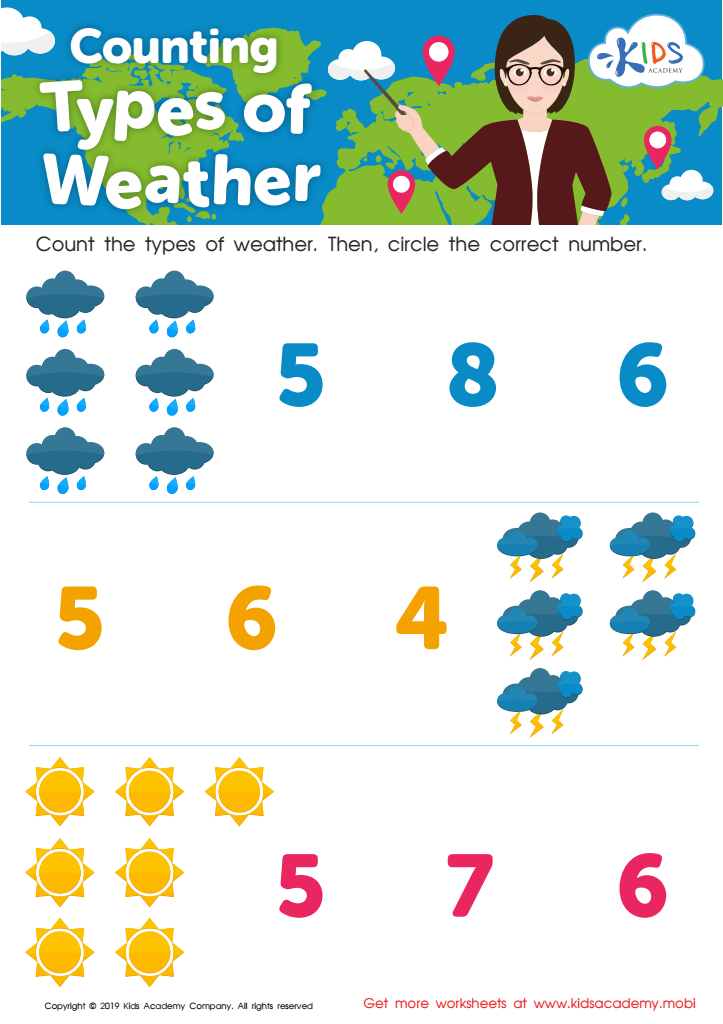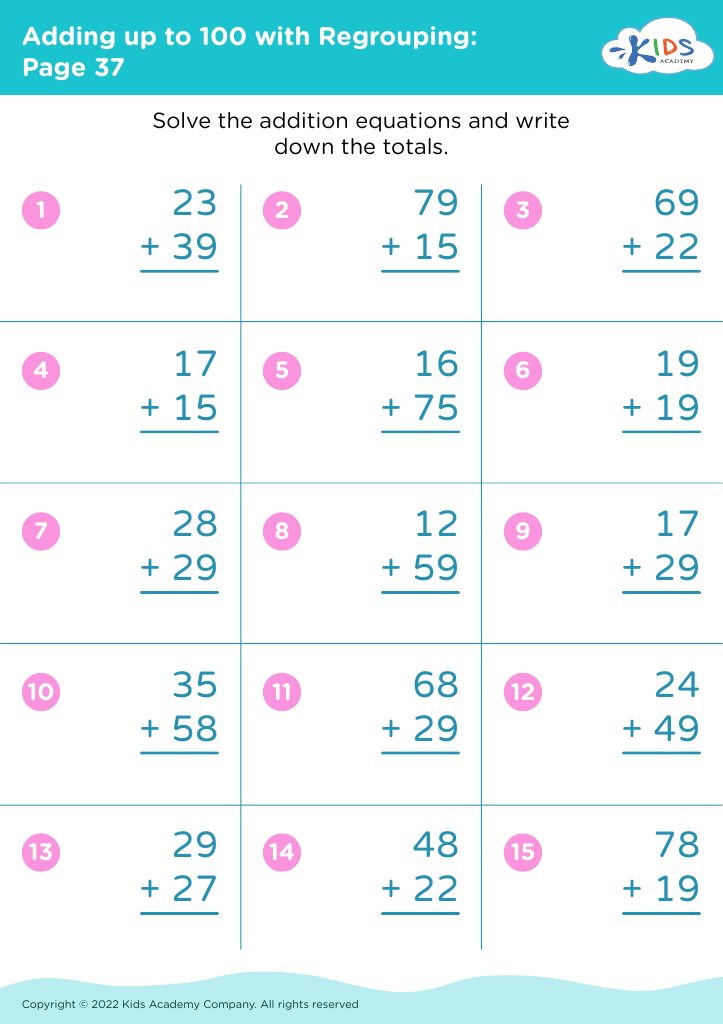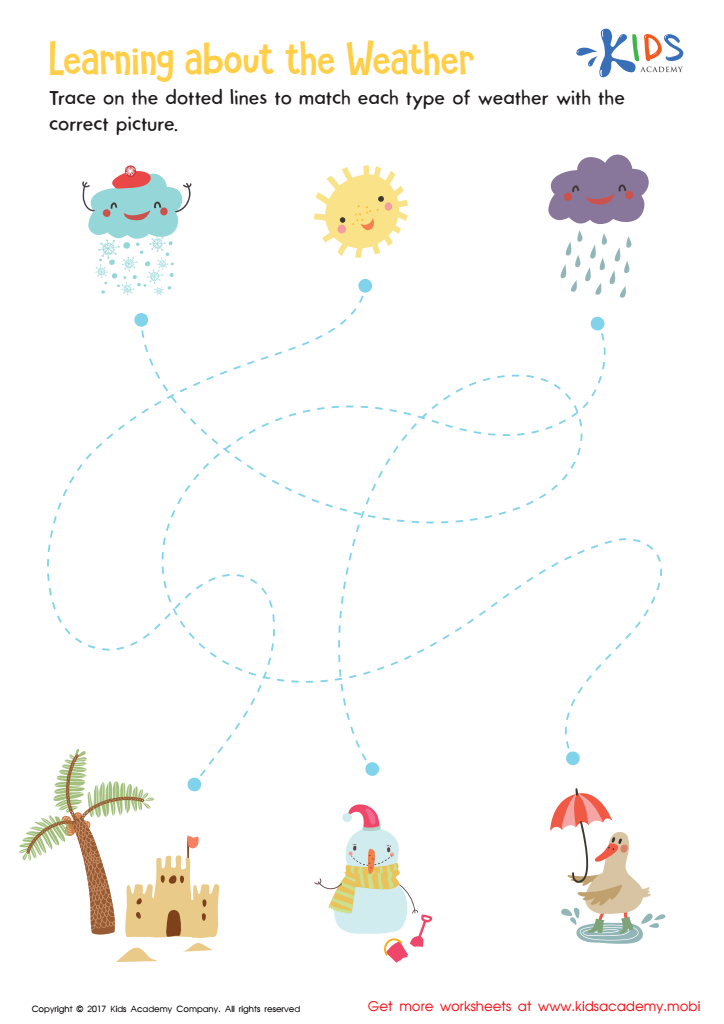Weather identification Math Worksheets for Ages 4-8
4 filtered results
-
From - To
Explore our engaging Weather Identification Math Worksheets designed for children aged 4-8. These resources combine essential math skills with delightful weather themes, making learning fun and interactive. Each worksheet encourages kids to identify different weather types while practicing counting, number recognition, and simple addition. Perfect for home or classroom use, our worksheets promote early math proficiency and enhance critical observational skills. Parents and educators will appreciate the easy-to-follow formats that cater to various learning styles. Help your child discover the wonders of weather while building a strong math foundation with our thoughtfully crafted worksheets! Start your learning journey today!


What's the Weather Like? Worksheet


Counting Types of Weather Worksheet
Weather identification math is crucial for children aged 4-8 as it seamlessly integrates core concepts of math, science, and critical thinking. Early exposure to weather patterns fosters curiosity about the world around them. By identifying simple weather phenomena like rain, sunshine, or snow, children learn to make sense of their environment while developing observational skills.
Furthermore, incorporating math into weather identification—like counting raindrops, measuring temperature changes, or graphing sunny versus rainy days—reinforces foundational math skills such as number recognition, addition, subtraction, and data interpretation. This hands-on, context-rich learning captures children's attention and deepens their understanding.
Also, weather education helps instill important life skills, such as planning for outdoor activities based on weather conditions, promoting safety and preparedness. Engaging in discussions about the weather encourages language development and vocabulary expansion, as children learn associated terms.
Ultimately, teachers and parents should prioritize weather identification and math as a powerful learning tool, aligning with developmental objectives while making learning relevant and fun. This approach not only nurtures cognitive development but also builds an appreciation for the natural world, laying a strong foundation for lifelong learning and environmental stewardship.


 Assign to My Students
Assign to My Students





















